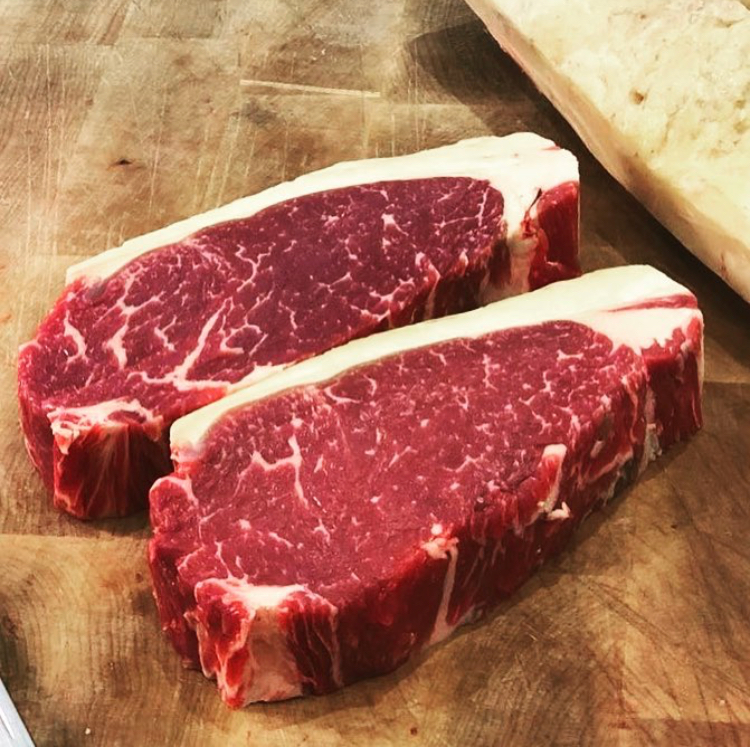Know your marbles – what makes a great steak?
If you like your steak to be full of flavour, moist and juicy, it’s worth learning about different types of fat that you see in and around a steak. The most important of which is the intramuscular fat known as marbling. Steak with good levels of marbling running though it will not only keep moist and succulent while it is being aged and cooked but the unsaturated (healthy) fat that forms the marbling will add flavour to the meat in the process.
The amount of marbling can depend on several factors including the breed and age of the cattle. Also, whether they’ve been grass or grain-fed. Good marbling can still be achieved from grain fed cattle but the taste is not as meaty. At The Jones Family Kitchen our steak comes from The Ginger Pig. We believe that the naturally fed traditional English Longhorn cattle they rear and the way they rear them produces steak that tastes fantastic on the plate.
In beef cattle, there are two types of fat which develop in three distinct places.
Subcutaneous fat is the layer, known as the ‘bark’, that is most obvious to see. It is formed between the skin (or rind) and the lean tissue and runs along one side of steak cuts such as sirloin.
Intramuscular fat is formed in two places. Firstly between an animal’s muscle and often seen at the edges of stewing steak. Secondly, as unsaturated (healthy) fat in the muscle fibres themselves, where it can appear as thin creamy streaks or specks and the pattern it makes here is known as marbling.

(Photo of Ginger Pig Steaks by Kristin Perers. Top row (left-right) rib eye, wing rib, prime rib. Bottom row (left to right) T-bone, sirloin.)
Within the same animal the amount marbling varies from one cut to another. Cuts of meat with a lot of marbling mostly come from the loin region. There is more marbling on cuts further forward such as a rib eye, while the sirloin and fillet which comes from further back, is a leaner steak.
Longhorn cows grow slowly and as they do they convert grass into muscle and fat. Unlike many other breeds, which lay down excessive amounts of external bark fat before the formation of intramuscular fat can take place, Longhorns naturally produce good marbling without excess external fat cover.






